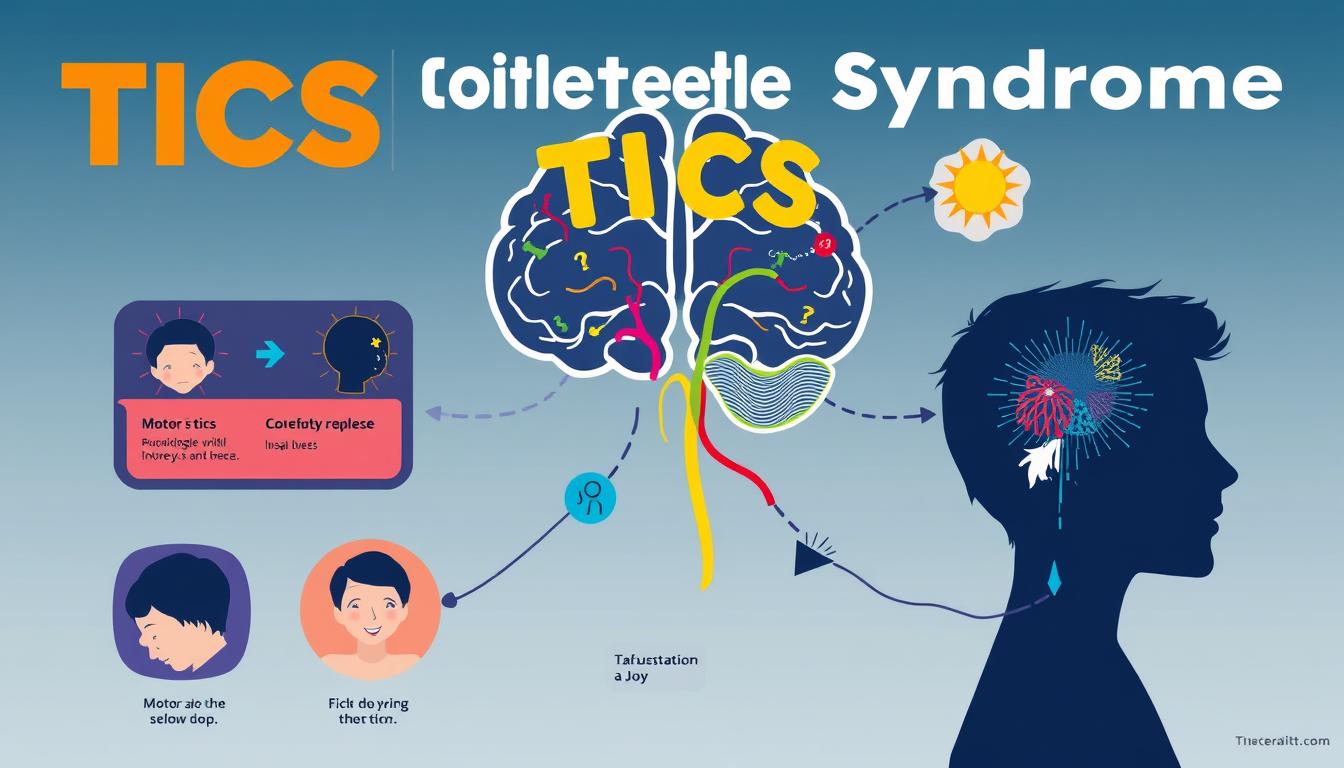We’re exploring the complex world of eating disorders in teens. Our aim is to give a full understanding of this serious issue. Eating disorders like anorexia, bulimia, and binge eating are becoming more common in young people. It’s vital to know the signs, symptoms, and what causes them.
This guide is for parents, teachers, and doctors. We want to help them spot, support, and guide teens with eating problems. Our goal is to give them the tools to help these young people.
Key Takeaways
- Eating disorders are a growing concern among teenagers, and it’s vital to understand the physical, behavioral, and emotional signs.
- The prevalence of eating disorders, including anorexia, bulimia, and binge eating, is on the rise in the adolescent population.
- Body image issues and the influence of social media play a significant role in the development of eating disorders in teenagers.
- Recognizing risk factors and triggers is essential for early intervention and effective treatment.
- Parental support, a nurturing home environment, and seeking professional help are key for recovery and long-term management.
What Defines Teen Eating Disorders: Key Signs and Symptoms
It’s important to know the signs of eating disorders in teens to help them early. We’ll look at physical, behavioral, and social signs that might show an eating disorder in teens.
Physical Symptoms to Watch For
Big changes in weight, like losing or gaining a lot, can be a sign. Teens might also feel tired, dizzy, or have poor circulation. They could lose hair, have brittle nails, or dry skin due to not getting enough nutrients.
Behavioral and Emotional Indicators
Counting calories too much, eating very little, and eating in secret are signs. Teens might also feel anxious, depressed, or have mood swings. These feelings can come from the mental side of an eating disorder.
Warning Signs in Social Interactions
Teens with eating disorders might not want to hang out or eat with others. They might focus a lot on how they look. These signs can help us see if a teen might have an eating disorder.
| Physical Symptoms | Behavioral Indicators | Social Warning Signs |
|---|---|---|
| – Significant weight fluctuations – Fatigue, dizziness, and poor circulation – Hair loss, brittle nails, and dry skin | – Obsessive calorie counting – Restrictive food intake – Secretive eating habits | – Withdrawal from social activities – Avoidance of mealtimes – Preoccupation with body image |
Knowing these signs helps parents, teachers, and doctors spot eating disorders in teens. This can help teens get the help they need for their mental health and well-being.
The Rising Prevalence of Eating Disorders Among Teenagers
In recent years, we’ve seen a worrying trend: eating disorders are on the rise among teenagers. This issue is a big concern for parents, teachers, and doctors. We’re all trying to figure out why this is happening and how to stop it.
Recent studies show that anorexia, bulimia, and binge eating disorder are more common in teens. In the U.S., adolescent mental health is a major public health issue. The number of cases has gone up a lot in the last ten years.
There are many reasons why this is happening. Societal pressures, media, and unrealistic body standards play a big role. These factors can make teens develop unhealthy attitudes towards food and their bodies. Also, better diagnosis and reporting might be why we’re seeing more cases.
Eating disorders can have serious effects on teens’ health. They can lead to growth problems, organ damage, and mental health issues like depression and anxiety. This shows how urgent it is to find ways to help and support these teens.
“The rise in eating disorders among teenagers is a concerning trend that demands our immediate attention. As a society, we must work together to foster a healthier, more inclusive environment that empowers young people to develop positive self-image and relationship with food.”
By talking about eating disorders in teens, we can raise awareness and push for more help. We need to create a supportive space where teens can deal with these challenges. This way, they can grow up strong and confident.
| Disorder | Definition | Prevalence Among Teens |
|---|---|---|
| Anorexia Nervosa | An eating disorder characterized by an intense fear of gaining weight and a distorted body image, leading to restrictive eating and dangerous weight loss. | 0.4% to 2% of adolescents |
| Bulimia Nervosa | An eating disorder marked by cycles of binge eating and purging, often through self-induced vomiting or the misuse of laxatives. | 1% to 2% of adolescents |
| Binge Eating Disorder | An eating disorder defined by recurrent episodes of excessive food consumption, often accompanied by a sense of lack of control and distress. | 1.6% to 3.5% of adolescents |
Eating Disorders in Adolescents: Anorexia, Bulimia, and Binge Eating
Adolescence is a key time when many face eating disorders like anorexia, bulimia, and binge eating. It’s important to know about these issues to help early and effectively.
Understanding Anorexia Nervosa
Anorexia makes people fear weight gain so much they eat very little. They see their body differently and may be very underweight. Symptoms include tiredness, hair loss, and a strong focus on food and weight.
Recognizing Bulimia Patterns
Bulimia is a cycle of eating a lot and then purging. People with bulimia might look normal, making it hard to spot. But, it can harm teeth, upset body salts, and cause stomach problems.
Identifying Binge Eating Disorder
Binge eating disorder means eating a lot without control, feeling ashamed and upset. Unlike bulimia, there’s no purging to make up for it. This can lead to weight gain and health issues.
Knowing how anorexia, bulimia, and binge eating show up helps us support teens and their families. It’s a complex issue, but with the right understanding, we can help.
The Role of Body Image and Social Media in Teen Eating Disorders
Understanding the impact of body image and social media on teenage eating disorders is key. The constant exposure to unrealistic beauty standards and online comparison can deeply affect our teens’ mental and physical health.
In today’s world, teens see images of seemingly perfect bodies everywhere. This fuels feelings of inadequacy and dissatisfaction with their own looks. Such feelings can lead to body image issues and eating disorders like anorexia, bulimia, and binge eating disorder.
The role of social media is huge. Platforms like Instagram and TikTok show idealized body types, creating a distorted view of what’s normal. This can start a cycle of comparison, self-criticism, and the chase for unattainable body goals. It also affects teenage nutrition and eating habits.
“Social media has become a battleground for body image, where the lines between reality and fantasy blur, and our young people are caught in the crossfire.”
To tackle eating disorders in teens, we must tackle body image and social media’s influence. By promoting healthy body image and realistic beauty standards, we can help our youth. This way, they can face these challenges with strength and self-acceptance.

| Impact of Social Media on Teenage Body Image | Percentage of Teenagers Affected |
|---|---|
| Increased body dissatisfaction | 70% |
| Negative self-esteem | 60% |
| Desire to lose weight | 50% |
By recognizing the impact of body image and social media, we can make a difference. We can create a supportive and empowering space for our youth to grow and thrive.
Understanding Risk Factors and Triggers
Eating disorders are complex, influenced by many factors. We need to look at genetic predisposition, environmental influences, and psychological factors. These all play a role in a teenager’s risk.
Genetic Predisposition
Genetics and family history are key in eating disorder risk. Studies show a link between family history and eating disorders. This means early intervention and family support are vital.
Environmental Influences
The environment affects a teenager’s risk. Peer influence, cultural pressures, and family dynamics are important. They can shape unhealthy attitudes towards food and body image.
Psychological Factors
Psychological traits and experiences also increase risk. Traits like perfectionism and low self-esteem are linked to eating disorders. So is a history of trauma or abuse.
Knowing these risk factors helps us target eating disorder treatment for teenagers. Early action and a complete approach are key. They help in recovery and a healthier body image.
Impact of Peer Pressure and School Environment
Teenagers face a complex social world at school. Their peers can deeply affect their mental health and how they see their bodies. Peer influence is a big reason why eating disorders start in teens.
Bullying and teasing can hurt a lot. They make teens feel bad about themselves and want to look a certain way. This pressure can lead to unhealthy habits like not eating enough or exercising too much.
Many schools are very competitive. Success in school and looks are often seen as key. This can make teens obsessed with their weight and shape.
“The school environment can be a breeding ground for eating disorders, as adolescents navigate the complexities of social hierarchies and the pressure to conform to certain body ideals.”
We must understand how peers and school settings affect teens’ mental health and body image. By tackling these issues and providing support, we can help teens have a better self-image. This can lower the risk of eating disorders.

How Parents Can Support Their Teens
Dealing with teen eating disorders can be tough for parents. But, your support and guidance can really help. By making your home a safe space, talking openly, and knowing when to get help, you can be a big help in their recovery.
Creating a Supportive Home Environment
It’s important to create a home where feelings are valued. Don’t talk about weight or dieting, as it can make things worse. Instead, focus on acceptance and letting your teen share their feelings without fear.
Communication Strategies
- Have open talks where your teen can share their struggles safely.
- Don’t be confrontational; be empathetic and listen well.
- Work together with your teen to find ways to support them, including their ideas.
When to Seek Professional Help
While you’re very important, sometimes your teen needs professional help. Watch for signs like big weight loss, severe dieting, or mental health issues. A mental health expert can offer the right help for your teen’s recovery.
Your constant support and fight for your teen’s health can greatly help them. By creating a caring home, talking openly, and knowing when to get help, you can help your teen beat eating disorders and live a better life.
Treatment Options and Recovery Pathways
Treating teenage eating disorders needs a team effort. Every recovery path is different. We’re here to help you explore the many treatment options.
Cognitive-behavioral therapy (CBT) is a top choice for teens. It helps them change negative thoughts and behaviors. Through CBT, they learn to cope better and see food and their body in a new light.
Family-based treatment (FBT) is also very effective. It involves the whole family in the recovery. Parents play a key role in helping their child get back to normal eating habits.
Nutritional counseling is key too. Our dietitians work with teens and their families. They create meal plans, teach about balanced nutrition, and help rebuild a healthy food relationship.
A team of mental health experts, nutritionists, and doctors is vital. They make sure the teen’s physical, emotional, and mental needs are met. This helps them heal fully and stay well in the long run.
| Treatment Approach | Key Focus | Potential Benefits |
|---|---|---|
| Cognitive-Behavioral Therapy (CBT) | Addressing negative thought patterns and behaviors | Developing healthy coping strategies, improving body image |
| Family-Based Treatment (FBT) | Involving the entire family in the recovery process | Restoring healthy eating habits, improving family dynamics |
| Nutritional Counseling | Developing personalized meal plans and nutritional education | Rebuilding a healthy relationship with food, improving physical health |
Exploring these treatment options and taking a holistic approach can help teens beat eating disorders. They can start a journey of recovery and growth.
“The road to recovery is not always smooth, but with the right support and guidance, teens can reclaim their health and find joy in living.” – Dr. Emily Johnson, Clinical Psychologist
The Importance of Early Intervention
Early intervention is key in treating eating disorders in teens. Spotting the early signs and acting fast can stop these conditions from getting worse. This helps our young ones get better in the long run.
Recognition of Early Signs
Being able to spot the early signs of an eating disorder is vital. Look out for:
- Sudden changes in eating habits, like eating very little or bingeing
- Big changes in weight, either losing or gaining a lot
- Being very focused on body image and counting calories
- Stepping back from friends and activities they used to enjoy
- Mood swings, feeling anxious or depressed
Steps for Immediate Action
If you think a teen might have an eating disorder, act quickly. Here’s what to do:
- Talk to them with kindness and understanding, showing you care.
- Listen to them without judging, and make sure they know you get it.
- Look for professional help, like a doctor or therapist who knows about early intervention strategies for disordered eating behaviors.
- Get the family involved and build a support network for ongoing care and family support.
- Help them find healthy ways to cope, like eating regular meals, taking care of themselves, and staying active.
Early action is critical in fighting disordered eating behaviors and helping teens get back on track. By being quick and caring, we can greatly help their recovery.
Building a Support Network
Recovering from an eating disorder is tough, but with the right support, teenagers can do it. Family, friends, and healthcare professionals are key in helping them. They offer care and encouragement during the recovery journey.
Getting family involved is vital. Parents and guardians can make a supportive home. They can talk openly, show empathy, and understand. By going to therapy together and learning about eating disorders, they can support their teenager better.
Friends also play a big role. Having friends who support healthy habits and body positivity is important. It helps fight against negative social pressures. Joining peer support groups can also strengthen their social network.
Healthcare professionals are also essential. They include therapists, nutritionists, doctors, and counselors. These experts help with the physical, emotional, and mental aspects of an eating disorder. Working with them, teenagers can learn coping strategies and build resilience for recovery.
Online communities and support groups are also helpful. They offer a sense of community, validation, and advice. Connecting with others who have gone through similar experiences can be very supportive.
“A strong support network is the foundation for a teenager’s successful recovery from an eating disorder. By involving family, peers, and healthcare professionals, we can provide the necessary care and encouragement for overcoming this challenge.”
Building a supportive network is key for teenagers with eating disorders. With family, friends, and professional help, they can overcome their struggles. This leads to a path of lasting recovery and well-being.

Long-term Recovery and Management Strategies
Recovering from a teenage eating disorder is a big journey. But, the journey to lasting well-being doesn’t stop with treatment. It’s important to keep healthy habits, avoid relapse, and build resilience. These steps help achieve lasting recovery and better teenage nutrition, body image, and adolescent mental health.
Maintaining Healthy Habits
The path to recovery is made of small, consistent steps. Eating a balanced diet and staying active can help teens feel in control. Regular health check-ups also help keep recovery on track.
Preventing Relapse
Relapse is a common challenge in recovery. But, with the right strategies, teens can handle triggers and setbacks. Early warning signs, stress management, and a strong support network can prevent relapse.
Building Resilience
Building resilience is key for long-term recovery. Teens can learn to manage tough emotions with mindfulness and positive self-talk. Celebrating small victories also boosts resilience during recovery.
| Healthy Habit | Benefits |
|---|---|
| Balanced Nutrition | Supports physical and mental well-being, aids in restoring a healthy relationship with food. |
| Regular Exercise | Enhances mood, boosts self-esteem, and helps maintain a healthy body image. |
| Stress Management | Equips teenagers with tools to navigate triggers and prevent relapse. |
By focusing on these long-term recovery strategies, teens can take back their lives. They can build a future filled with resilience, self-acceptance, and well-being.
“The journey of recovery is not a straight line, but a winding path. With the right support and strategies, teenagers can emerge stronger and more resilient than ever before.”
Conclusion
Eating disorders in adolescents are complex and need a full approach to solve. We’ve looked at signs, body image, and social media’s role. These factors all play a part in why eating disorders are more common in teens.
Supporting our youth is key. We need to focus on early intervention strategies and build a strong family support network. By watching for early signs and acting fast, we can help our teens recover. This helps them have healthy relationships with food and their bodies.
Recovery is possible, and with the right help, our teens can beat eating disorders. Let’s keep spreading awareness, reduce stigma, and work together. We want a world where all young people can be themselves without fear.



